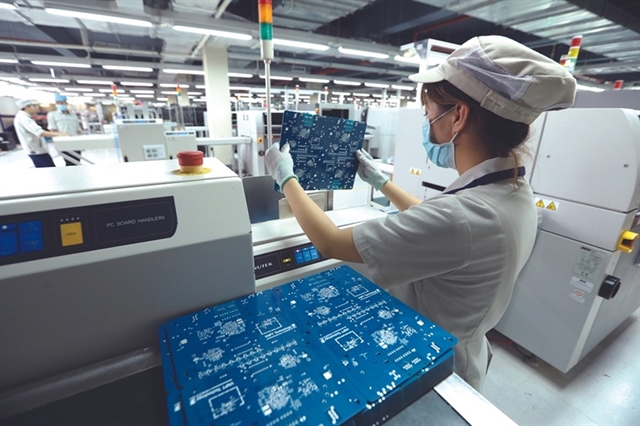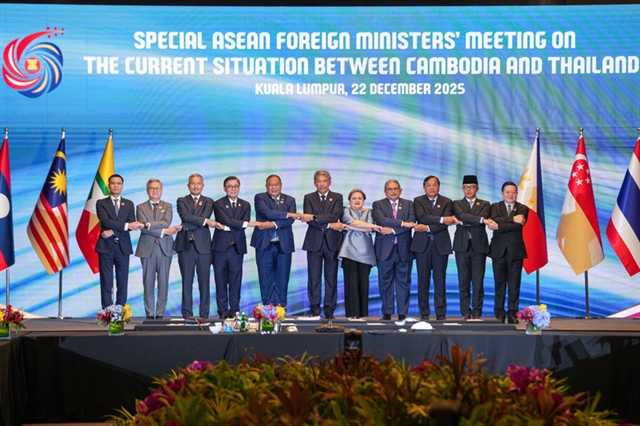 Society
Society

Taiwan-invested Hưng Nghiệp Formosa Hà Tĩnh Iron and Steel Co.,Ltd has conducted test run of its first blast furnace, deputy director of the Vietnam Environment Administration Hoàng Dương Tùng said on Monday.
 |
| A worker checks a waste water treatment system at Taiwan-invested Hưng Nghiệp Formosa Hà Tĩnh Iron and Steel Co Ltd. The company has conducted test runs of its first blast furnace. – VNA/VNS Photo Quang Quyết |
HÀ NỘI – Taiwan-invested Hưng Nghiệp Formosa Hà Tĩnh Iron and Steel Co. Ltd has conducted test runs of its first blast furnace, deputy director of the Vietnam Environment Administration Hoàng Dương Tùng said on Monday.
At a press conference held by the Ministry of Natural Resources and Environment, Tùng said an inspection team, led by the administration’s leader, had been set up to strictly monitor the company’s blast furnace.
Wastewater samples will be collected every five minutes for tests. The initial result of the run will be available soon.
The company has restarted one year after a suspension due to its toxic spill scandal on the sea off central provinces coastline.
On May 10, the ministry gave Formosa the green light to test its blast furnace after the company fixed 52 out of 53 faults. Continuous supervision from July 2016 showed that Formosa’s wastewater met national standards on steel sewage and industrial sewage.
At the conference, ministry representatives addressed issues raised by the press about the marine environment in central region, the environmental impacts on resorts and land accumulation.
Deputy Prime Minister Trương Hoà Bình has provided guidance in stopping deep-water fishing in four affected central provinces of Hà Tĩnh, Quảng Bình, Quảng Trị, and Thừa Thiên Huế.
Tùng affirmed that the bottom eco-system was gradually recovering, including coral reefs. "The process takes a lot of time, and the halt of deep-water fishing will help avoid any impact on the process."
Hoàng Văn Thức, deputy head of the administration and head of Formosa’s supervision team, said the company’s wastewater had been tested strictly before it was discharged into the sea since last July.
The ministry has co-operated with the Institute of Environmental Technology to collect the samples for tests three times per day, and all results were within the ministry’s allowed level. The emission results met the ministry’s requirements.
Formosa has installed 15 emission monitoring stations, which are connected to Hà Tĩnh Province’s Department of Natural Resources and Environment and the ministry for around-the-clock supervision.
Solid waste from the company has been collected and sent to Hà Tĩnh Waste Treatment One Member Co. Ltd.
Thức said the company was basically under control when it came to test run. The trial time was six months, and the test run would generate an additional 300-500 cubic metres of biochemical wastewater from the coking plant per day.
The bio-waste water treatment plant was designed with a maximum capacity of 4,800 cubic metres per day, and was currently treating 1,900 cubic metres per day.
In April last year, wastewater discharged from Formosa polluted more than 200 kilometres of coastline, devastating the marine environment and local economies of central Hà Tĩnh, Quảng Bình, Quảng Trị and Thừa Thiên Huế provinces, which have largely relied on fishing and tourism.
Four months later, the company owned up to its mistake, offering a public apology and pledging US$500 million as compensation for affected fishermen, households and organisations. – VNS




